Polypropylene pipes reinforced with fiberglass for heating
Any water-type heating system assumes the presence of circuits through which the coolant circulates. These pipe lines connect the boiler with all, to the most remote, heat exchange devices - heating radiators. As a result, in a building or even an apartment of a large area, the general system can take on a very complex branched form, and the length of the laid pipes can be tens or even hundreds of meters.
Not so long ago, there was practically no alternative to VGP steel pipes. But, you see, their acquisition, transportation and installation itself are very difficult, expensive and not accessible to everyone for self-execution activities. And, frankly, there are a lot of other shortcomings in such pipes. Another thing is inexpensive, lightweight, easy to install, and simply outwardly pretty polypropylene pipes. True, not all of their varieties are suitable for such purposes, due to the characteristics of the material of manufacture. But polypropylene pipes reinforced with fiberglass for heating will be an excellent option.
In addition to them, polypropylene pipes are also produced with aluminum reinforcement, therefore, in order to figure out which ones are better, it is worth comparing them. Only in this way will it be possible to evaluate and identify the characteristic features of different types of these products.
Why are reinforced polypropylene pipes needed for heating?
The heating system will be reliable in operation if you choose the “right” pipes for it that meet certain requirements. Such criteria include the resistance of products to high temperature and pressure loads. to the aggressive effects of the coolant circulating through them. It is especially important to consider these requirements if the pipes and their fittings are planned to be installed in a system connected to a district heating supply.
In specialized stores, you can find reinforced polypropylene pipes with different wall thicknesses, made from materials of different quality, differing in resistance to high pressure and temperatures, ultraviolet exposure, and having different coefficients of linear expansion. Therefore, if it is decided to mount a new circuit or replace the old pipes with polypropylene ones, it is necessary to know the evaluation criteria that the materials used for these purposes must meet.
So, for the installation of the heating circuit, it is necessary to choose pipes that meet a number of important requirements.
- The temperature of the coolant in the central heating system is usually 75 ÷ 80 degrees, but sometimes it can reach higher values, close to 90 ÷ 95 ºС. Therefore, when purchasing these products, it is worth choosing them with a margin of thermal stability, that is, their characteristics should indicate a temperature of at least 95 degrees.
- Polypropylene is an excellent material for pipes, but it has a characteristic quality - a too significant coefficient of linear expansion with temperature changes (according to tabular data - 0.15 mm / m × ºС). A little? But what if we look at this matter “through the prism” of absolute values?
Suppose the installation of the heating circuit was carried out at a temperature of +20 ºС. After starting the heating system, the temperature in the supply pipe is planned, even if only at 75 ºС. So, we have a drop with an amplitude of + 55 degrees. With the above coefficient of thermal expansion, each meter of our circuit will increase in length by 8.25 mm. Even on a relatively small straight section of 3 meters, this will already give 2.5 centimeters of elongation, not to mention longer sections. But this is already - very seriously!

As a result, pipes located openly are deformed, bent, jump out of their clips. Naturally, at the same time, internal stresses in their walls grow, the connecting nodes are overloaded, and the tightness of the threaded connections on the fittings may be broken. The system is clearly losing not only in the aesthetics of its appearance, but also in overall reliability.
And what happens to such pipes if they are hard-wired into walls or floors? It is even difficult to imagine how great internal stresses their walls experience. It is clear that there is no question of any durability of such a heating circuit.
But for reinforced pipes, the coefficient of linear expansion is almost five times less. With the same initial data, a three-meter section will lengthen by only 4.95 mm, which is not at all critical. Of course, this does not eliminate the need to compensate for linear expansion over very long segments, but on the other hand, the compensators themselves (loop or bellows) will need to be much smaller, and they can be placed in inaccessible places.
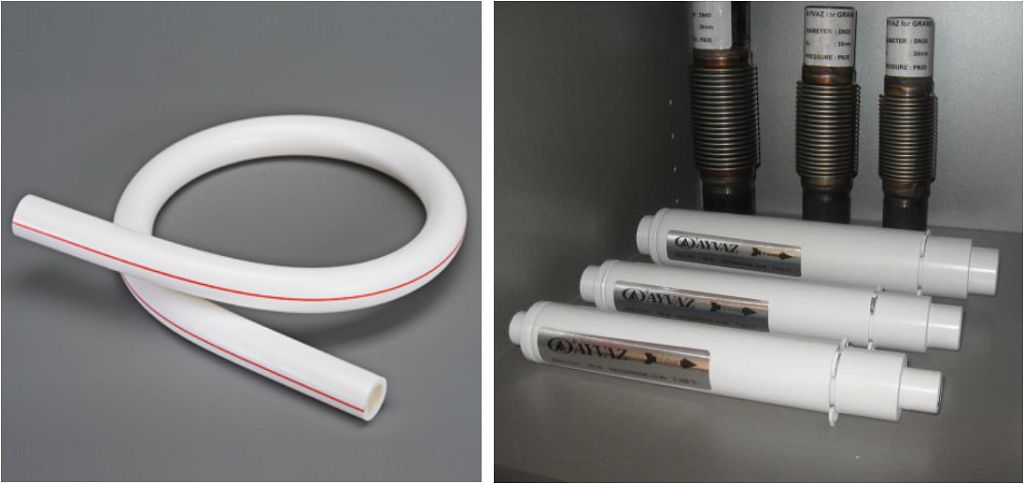
- In addition to high temperatures, the central heating system is not distinguished by pressure stability, since, especially at the start of testing activities after the summer season, uncontrolled pressure surges, up to powerful water hammers, usually occur in it. Therefore, pipes must be resistant to baric overloads, and only products reinforced with aluminum or fiberglass have such qualities to a much greater extent.
- The service life of pipes for heating systems declared by the manufacturer must be comparable with the durability of other devices and elements included in the common circuit. And in this position, reinforced polypropylene pipes have a clear advantage.
- A good property of propylene is inertness to the aggressive medium of the coolant, since the wall material should not be subject to corrosion and destructurization from the effects of various chemicals, the presence of which, alas, cannot be excluded in the central heating system.
- Ideally smooth surfaces of the inner walls of pipes made of polypropylene make it possible to freely circulate the coolant through the heating circuit.
- Polypropylene has the ability to muffle the sounds of coolant circulation inside the system, which distinguishes it from traditional steel. Fiberglass-reinforced pipes have this advantage to a more pronounced degree.
Marking of polypropylene pipes
Without exception, all polypropylene pipes must have an alphanumeric marking on their surface, which indicates their main physical, technical and operational characteristics. When purchasing pipes, it is recommended to carefully study the marking so as not to make a mistake with the choice of the best option.
For clarity, consider the marking on an example:
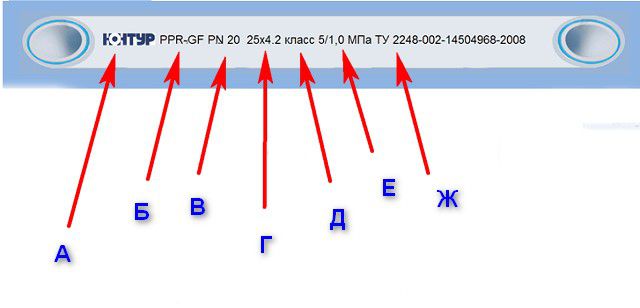
BUT- as a rule, the marking begins with the logo or company name of the material manufacturer. In any case, those firms that really enjoy authority in this area of \u200b\u200bproduction do not hesitate to put their name on each unit of their products. Well, if the manufacturer is "shy", and nothing of the kind is indicated in the labeling, this should be a reason to think about whether it is worth buying such a product, whether it is a cheap imitation.
B– The following abbreviation refers to the structural structure of the pipe. The following notations are usually found here:
- PPR - polypropylene pipe without any internal reinforcement;
- PPR-FB-PPR - glass fiber reinforced pipe;
- PPR / PPR-GF / PPR or PPR-GF - a pipe reinforced with a composite material, which includes fiberglass and polypropylene;
— PPR-AL-PPR - a pipe reinforced with aluminum foil.
- PP-RCT-AL-PPR - this complex abbreviation indicates that the pipe consists of several layers made of different materials. So PP-RCT - the inner layer is modified polypropylene with improved thermostatic properties, AL - the middle layer is aluminum foil, and PPR - the outer layer is polypropylene.
IN- The following designation, PN, is the type of pipe, which largely indicates its operational characteristics and areas of possible purpose. The numbers indicate the nominal working pressure in the system (in bar or technical atmospheres):
- PN-10 - such pipes can withstand a pressure of 10 bar, and can be used for cold water supply or, as an exception, for installing piping to underfloor heating circuits while maintaining the appropriate temperature regime, as they are designed for temperatures not exceeding + 45 degrees.
- PN-16 - products are designed for cold and hot water supply with temperatures up to + 60 degrees and working pressure up to 16 bar.
- PN-20 is the most popular option, since it can be called universal, as it is used for both hot and cold water supply, as well as for heating circuits. Pipes with this marking withstand temperatures of 95 degrees and pressures up to 20 bar.
- PN-25 - such pipes are the most durable, withstand a pressure of 25 bar and a temperature of 95 degrees. They are used for installation in risers of heating and hot water systems, including for circuits connected to central heating.
The main standard dimensional parameters of pipes for this classification are presented in the table below:
| Ø Нр, mm | PN-25 | PN-20 | PN-16 | PN-10 | ||||
|---|---|---|---|---|---|---|---|---|
| Ø Vn, mm | TS, mm | Ø Vn, mm | TS, mm | Ø Vn, mm | TS, mm | Ø Vn, mm | TS, mm | |
| 16 | - | - | 10.6 | 2.7 | 11.6 | 2.2 | - | - |
| 20 | 13.2 | 3.4 | 13.2 | 3.4 | 14.4 | 2.8 | 16.2 | 1.9 |
| 25 | 16.6 | 4.2 | 16.6 | 4.2 | 18 | 3.5 | 20.4 | 2.3 |
| 32 | 21.2 | 3 | 21.2 | 5.4 | 23 | 4.4 | 26 | 3 |
| 40 | 26.6 | 3.7 | 26.6 | 6.7 | 28.8 | 5.5 | 32.6 | 3.7 |
| 50 | 33.2 | 4.6 | 33.2 | 8.4 | 36.2 | 6.9 | 40.8 | 4.6 |
| 63 | 42 | 5.8 | 42 | 10.5 | 45.6 | 8.4 | 51.4 | 5.8 |
| 75 | 50 | 6.9 | 50 | 12.5 | 54.2 | 10.3 | 61.2 | 6.9 |
| 90 | - | - | 60 | 15 | 65 | 12.3 | 73.6 | 8.2 |
| 110 | - | - | 73.2 | 18.4 | 79.6 | 15.1 | 90 | 10 |
| Ø Nr - outer diameter of the pipe | ||||||||
| Ø Vn - Diameter of the inner channel of the pipe (nominal bore) | ||||||||
| TS – pipe wall thickness | ||||||||
G- The next indicator is the outer diameter of the pipe and the thickness of its walls in millimeters.
D- The service class (the parameter is set by GOST for pipes of domestic production) indicates the recommended scope of this type of pipe:
| Operation class of polypropylene pipes | Fluid temperature (operating / maximum), ºC | The purpose of the pipes |
|---|---|---|
| XV | up to 20 | Cold water systems+ |
| 1 | 60 / 80 | Hot water system with a maximum temperature of 60 ºC |
| 2 | 70 / 80 | Hot water system with a maximum temperature of 70 ºC |
| 3 | 40 / 60 | Underfloor heating systems with low temperature operation |
| 4 | 60 / 70 | Underfloor heating systems with high-temperature operating modes, classic heating systems heating with maximum heat carrier temperatures up to 60 ºC |
| 5 | 80 / 90 | Heating systems with high temperatures, including those with district heating |
F- The last alphanumeric designation indicates the regulatory document (GOST, ISO or TO), according to the standards of which these products are manufactured.
Having received information about the classification of the pipe, you can immediately assess the possible duration of its operation under the planned conditions. The following table will help you with this:
| Heat carrier temperature, ºС | Estimated service life | Pipe types | |||
|---|---|---|---|---|---|
| PN-25 | PN-20 | PN-16 | PN-10 | ||
| Maximum working pressure in the system (kgf/cm²) | |||||
| 20 | 10 | 33.9 | 21.7 | 21.7 | 13.5 |
| 25 | 33 | 26.4 | 21.1 | 13.2 | |
| 50 | 32.3 | 25.9 | 20.7 | 12.9 | |
| 30 | 10 | 9.3 | 23.5 | 18.8 | 11.7 |
| 25 | 28.3 | 22.7 | 18.1 | 11.3 | |
| 50 | 27.7 | 22.1 | 17.7 | 11.1 | |
| 40 | 10 | 25.3 | 20.3 | 16.2 | 10.1 |
| 25 | 24.3 | 19.5 | 15.6 | 9.7 | |
| 50 | 23 | 18.4 | 14.7 | 9.2 | |
| 50 | 10 | 21.7 | 23.5 | 17.3 | 13.9 |
| 25 | 20 | 16 | 12.8 | 8 | |
| 50 | 18.3 | 14.7 | 11.7 | 7.3 | |
| 60 | 10 | 18 | 14.4 | 11.5 | 7.2 |
| 25 | 15.3 | 12.3 | 9.8 | 6.1 | |
| 50 | 13.7 | 10.9 | 8.7 | 5.5 | |
| 70 | 10 | 13.3 | 10.7 | 8.5 | 5.3 |
| 25 | 11.9 | 9.1 | 7.3 | 4.5 | |
| 30 | 11 | 8.8 | 7 | 4.4 | |
| 50 | 10.7 | 8.5 | 6.8 | 4.3 | |
| 80 | 5 | 10.8 | 8.7 | 6.9 | 4.3 |
| 10 | 9.8 | 7.9 | 6.3 | 3.9 | |
| 25 | 9.2 | 7.5 | 5.9 | 3.7 | |
| 95 | 1 | 8.5 | 7.6 | 6.7 | 3.9 |
| 5 | 6.1 | 5.4 | 4.4 | 2.8 | |
The structure of polypropylene pipes with fiberglass reinforcement
As mentioned above, polypropylene pipes are reinforced to make them resistant to elevated temperatures and baric loads and to drastically reduce the rate of linear thermal expansion. In order to decide which option is better to choose - pipes reinforced with aluminum or fiberglass, it is worth comparing their main characteristics.
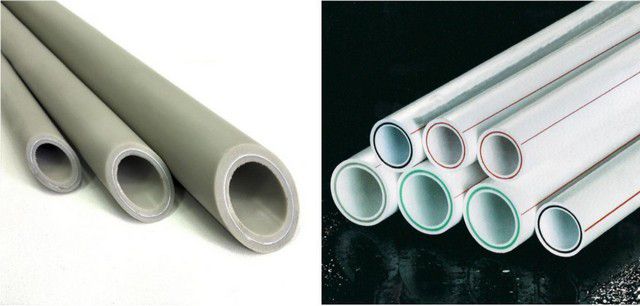
Fiberglass began to be used to strengthen polypropylene pipes much later than aluminum foil. Products reinforced with this material are a three-layer structure, and the reinforcing layer is located between two layers of polypropylene.
"Armopoyas" can consist only of fiberglass, or of a composite material containing fiberglass and polypropylene in its composition. In any of these options, the layers have excellent adhesion to each other, practically becoming a monolithic structure.
Thanks to such a reliable soldering, the delamination of the walls of a well-made pipe is even theoretically impossible.
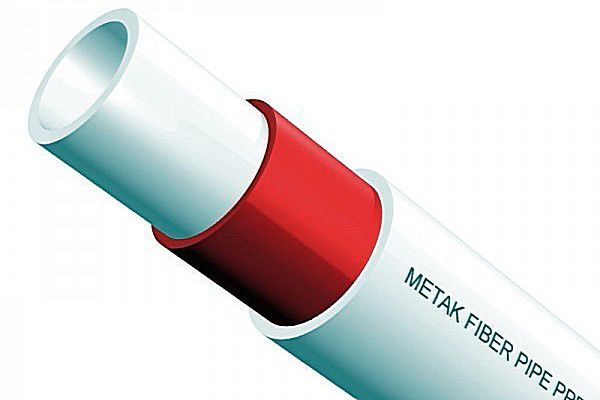
Fiberglass perfectly restrains thermal expansion, which prevents the pipes from deforming and stretching in any way when the temperature rises.
This type of reinforced polypropylene pipes is produced in various dimensional parameters. So, products with a diameter of less than 17 mm are used mainly for installing the "warm floor" system, pipes Ø 20 mm are well suited for domestic hot water distribution, and from 20 to 32 mm (sometimes more) - for arranging heating circuits .
The connection of polypropylene pipes with fiberglass reinforcement is carried out by welding, sometimes by other installation methods. Moreover, during welding, this type of pipe does not require a rather laborious stripping operation, which greatly facilitates and speeds up the work. The absence of metal elements in the design of these pipes eliminates the appearance of deposits of hardness salts, and the connections of all parts of the heating system become completely monolithic.
Let's compare the advantages and disadvantages of fiberglass and aluminum reinforcement of PPR pipes
- The first thing to say is that the coefficient of thermal expansion for pipes with aluminum and fiberglass reinforcement is almost the same, and ranges from 0.03 to 0.035 mm / m × ºС. Thus, both types, from this point of view, are equivalent.
- The fiberglass reinforcing layer closes the entire space between the outer and inner layers of polypropylene. Therefore, these pipes are tear-resistant, reliable and durable, and their estimated service life is about 50 years. In aluminum-reinforced pipes, the reinforcing layer has a welded seam (and sometimes, in inexpensive products, even simply joined edges of the foil are overlapped), which makes them more vulnerable to elevated temperature and pressure.
- Pipes reinforced with fiberglass are a good anti-diffusion layer that does not allow oxygen to pass to the coolant.
The diffusion process will necessarily lead to an acceleration of the corrosion processes of the metal equipment of the heating system - this is a boiler, pump, shut-off and control valves and other elements.
Since aluminum-reinforced products sometimes have a non-continuous foil layer, the risk of penetration into the coolant increases. In addition, aluminum itself is very unstable to oxygen corrosion.
- When installing pipes with a fiberglass layer, the density and strength of their connections do not require regular monitoring and maintenance. If aluminum-reinforced products are installed, the reliability of the connection will depend on the quality of the calibration and stripping them before installation.
The fact is that pipes with an aluminum reinforcing belt are a glued wall construction. If during the soldering process a section of metal remains on the cut, in contact with the coolant, then it is from here that the process of wall delamination can begin. And this, in turn, with a high degree of probability will lead to swelling first, and then to a breakthrough of the pipe body.
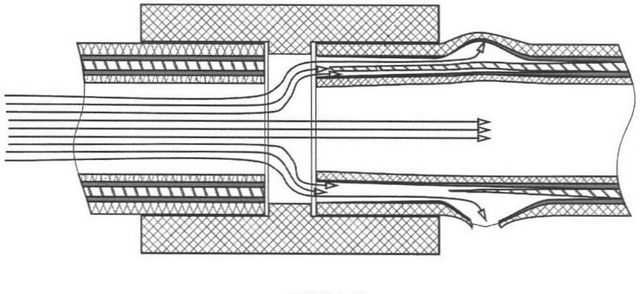
And for pipes with fiberglass reinforcement, which are almost a monolithic structure, this "Achilles' heel" is absent.
Yes, and it is much faster and easier to weld pipes without stripping, especially since you do not need a special tool (shaver) for these purposes.
- Pipes reinforced with fiberglass have good thermal insulation properties, which minimizes heat loss. For pipes reinforced with aluminum foil, the thermal conductivity is slightly higher.
- All materials used in the manufacture of reinforced polypropylene pipes for heating are non-toxic and do not emit harmful fumes both when cold and when heated. This applies equally to both types of pipes.
- The resistance to chemical influences is no different, which allows both types to withstand the “aggression” of a low-quality coolant.
- The temperature range within which these types of pipes are normally operated is from -10 to +95 degrees. But, even with a short-term increase in temperature above this, the pipe may sag a little, but it should not be damaged.
Based on the considered characteristics of the data, we can conclude that the best option for installation in a heating system for supplying coolant to radiators are pipes PN-20 and PN-25 with diameters from 20 ÷ 25 mm. But when pipes with a smaller diameter are installed in the heating system, the internal seam formed during the soldering process can prevent the free flow of the coolant.
For the installation of risers, pipes with a diameter of at least 32 mm are usually selected, otherwise it may also be small for the full movement of the coolant. Larger diameters can also be used on the collector sections of the system - the range of products on sale allows this.
Manufacturers of polypropylene pipes reinforced with fiberglass.
At the end of the publication - a short review of high-quality polypropylene pipes with fiberglass reinforcement, domestic and imported, which have earned positive feedback from professionals.
"METAK"
METAK is a Russian company producing various polypropylene products for heating and cold water supply systems, including glass fiber reinforced pipes under the METAK FIBER brand. This product is excellent for installation in highly loaded heating systems.
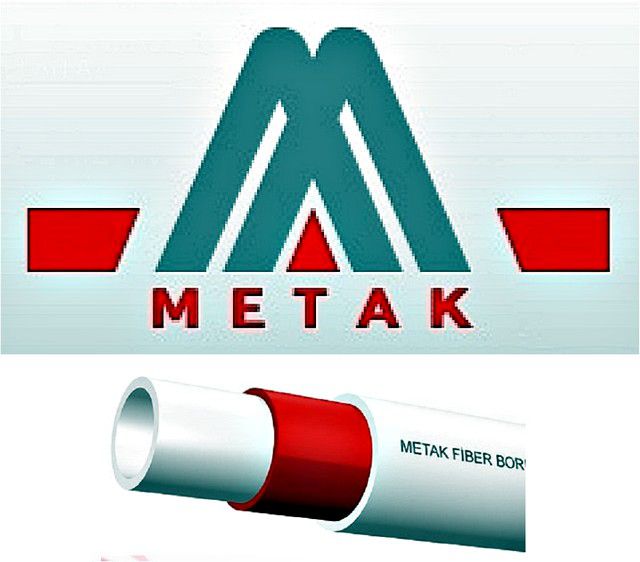
The pipes are produced in white design, have a maximum operating temperature of 95 degrees, are designed for an operating pressure of 25 bar with a destructive pressure of 50 bar.
Fiberglass-reinforced polypropylene three-layer pipes of the METAK company and their connecting parts (fittings) are produced in accordance with GOST. They are used to install pipelines for cold and hot water supply, underfloor heating, wiring systems and process pipelines, so they can have different diameters.
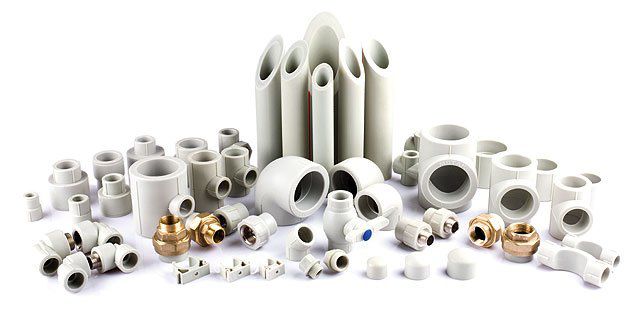
This table provides information on the dimensions of the fiberglass reinforced pipes produced by this company. Common to all products is the length, which is 4000 mm.
| Pipe outer diameter, mm | Inner diameter, mm | Wall thickness, mm |
|---|---|---|
| 20 | 13.2 | 3.4 |
| 25 | 16.6 | 4.2 |
| 32 | 21.2 | 5.4 |
| 40 | 26.6 | 6.7 |
| 50 | 33.2 | 8.4 |
| 63 | 42 | 10.5 |
| 75 | 50 | 12.5 |
These products are great for heating systems of country houses and apartments in multi-storey buildings. All METAK products comply with all domestic and European standards and requirements established for these products, as they are produced on high-tech equipment under the strict control of qualified specialists.
FV Plast
The Czech company "FV Plast" specializes in the development and manufacture of polypropylene pipes designed for pressure water pipes for supplying cold drinking water, hot water supply and heating systems. The company produces polypropylene pipes and fittings for them only in gray color, with a reinforcing aluminum and fiberglass layer.

"FV Plast" was one of the first to start manufacturing products reinforced with fiberglass - this product range is called "FASER".
Characteristics of FV Plast FASER pipes reinforced with fiberglass:
- The operating temperature of the coolant is up to 80 degrees.
- A short-term increase in temperature is allowed up to 90 degrees.
- The working pressure of the system is 20 bar.
- The maximum allowable pressure is 36 bar.
- The service life of products declared by the manufacturer is 25÷50 years.
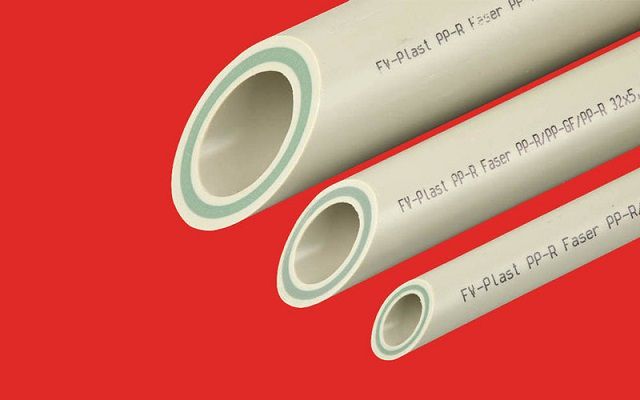
In addition to the pipes themselves, the company presents on the market all the necessary components for them, which allows the material from one manufacturer to create heating circuits of any complexity with guaranteed reliability.
Kalde
Kalde is Turkey's leading manufacturer of modern heating and plumbing systems assembled from PPR pipes and fittings. The material of this company is characterized by maximum protection against build-up and contamination inside the pipes during the entire service life. Reliable, lightweight, durable, comfortable and economical Kalde systems are inert to corrosion and chemical attack. Available in the widest range of diameters - from 20 to 110 mm.

Kalde Fiber is a three-layer pipe with a white outer surface, made of polypropylene and reinforced with fiberglass. It is distinguished by excellent heat resistance, with the upper limit of the coolant temperature reaching up to 95 degrees. Even at such a temperature in the system, a pressure not exceeding 10 bar, the manufacturer declares a service life of at least 50 years.
In addition to the above, the company also produces various types of polypropylene pipes:
- PN10 and PN20 made of polypropylene, PPRC– without internal reinforcement.
- PN20 and PN25 reinforced with aluminum foil - pipes for heating and heating, air conditioning systems and similar industrial uses.
- AL-Super is a polypropylene pipe, reinforced in the middle layer with aluminum foil, which does not require trimming and stripping.

The range of Kalde accessories is very diverse and designed for different, even the most complex heating circuits.
"BANNINGER"
BANNINGER is a German company that manufactures products that are distinguished by true European quality and undeniable reliability in operation. The company produces polypropylene pipes and a complete set of necessary accessories for installation of heating circuits, hot and cold water supply. A distinctive feature is the unusual, emerald green color of BANNINGER polypropylene pipes.
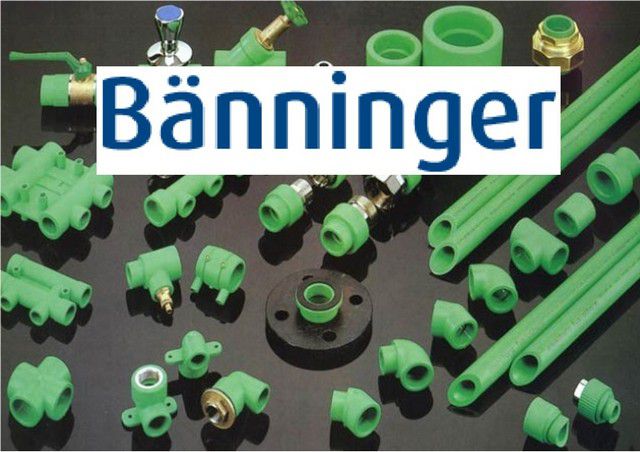
Products are characterized by high plasticity, therefore they calmly react to high and low temperatures. The parameters of polypropylene parts are selected taking into account studies on the fatigue properties of the material, during operation for 50 years, at a constant temperature of 70 degrees and pressure up to 10 bar.
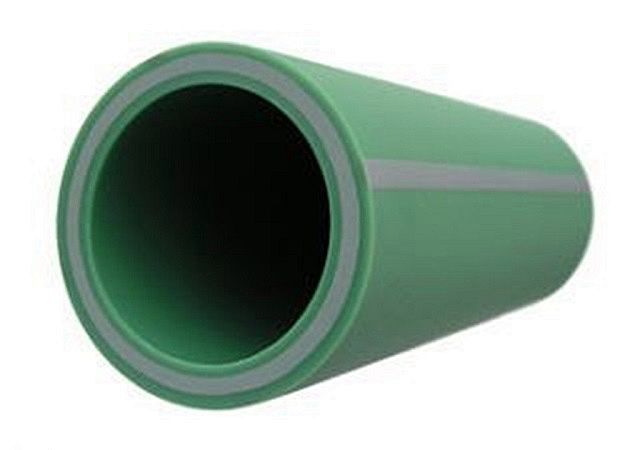
The company's product range includes polypropylene pipes without reinforcing materials, as well as with an aluminum and fiberglass layer. Within the framework of this article, samples of the WATERTEC series deserve attention. » and CLIMATEC. Their use will provide the created heating circuit with guaranteed indicators of reliability and durability.
A few words at the end
In conclusion, I would like to recommend that you do not purchase pipes from unknown manufacturers who do not even mention the name of their company in the product labeling. Having saved a little, you can buy a product that will not last even one heating season, failing at the most inopportune moment. In such a situation, you will have to pay a much more serious amount to replace the pipes of the heating system, repair your own and, possibly, a neighbor's apartment.
Another little note. One of the most frequently asked questions is the following: “What information does the color of the reinforcing layer located in the pipe wall carry?” The answer is simple - none. The color of the reinforcement is rather a “whim” of the manufacturer, the desire to distinguish their products from the general background.
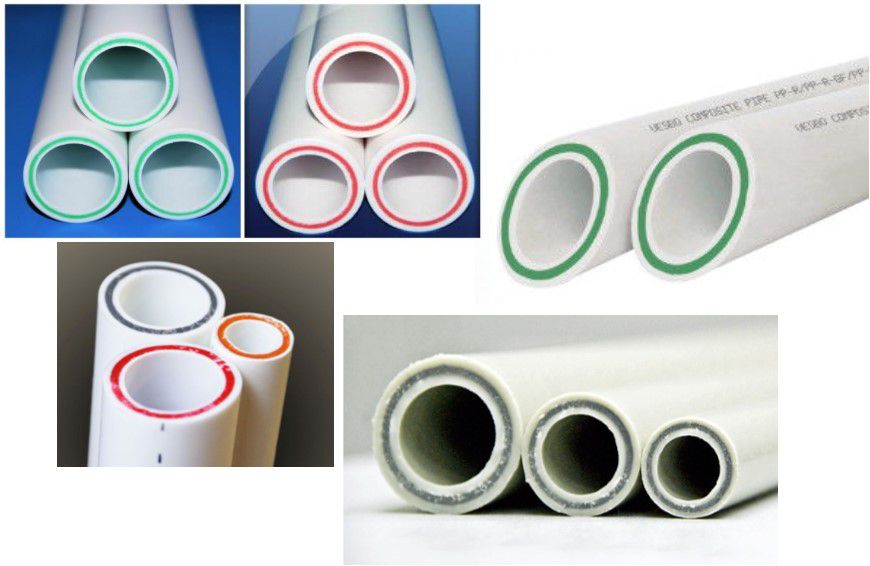
By and large, any fiberglass-reinforced polypropylene pipe is already designed for operation at elevated temperatures. So there will be a reinforcing "ring" red, green, blue or gray - it does not matter. The main information is in the alphanumeric marking of the pipe and in its technical documentation, which, by the way, do not forget to get acquainted with in the store when choosing a material.
And, finally, to "fix" the information received about polypropylene pipes - watch the video attached below:
Video: Recommendations for the right choice of polypropylene pipes
author Nikolai Strelkovskiy, editor-in-chief
